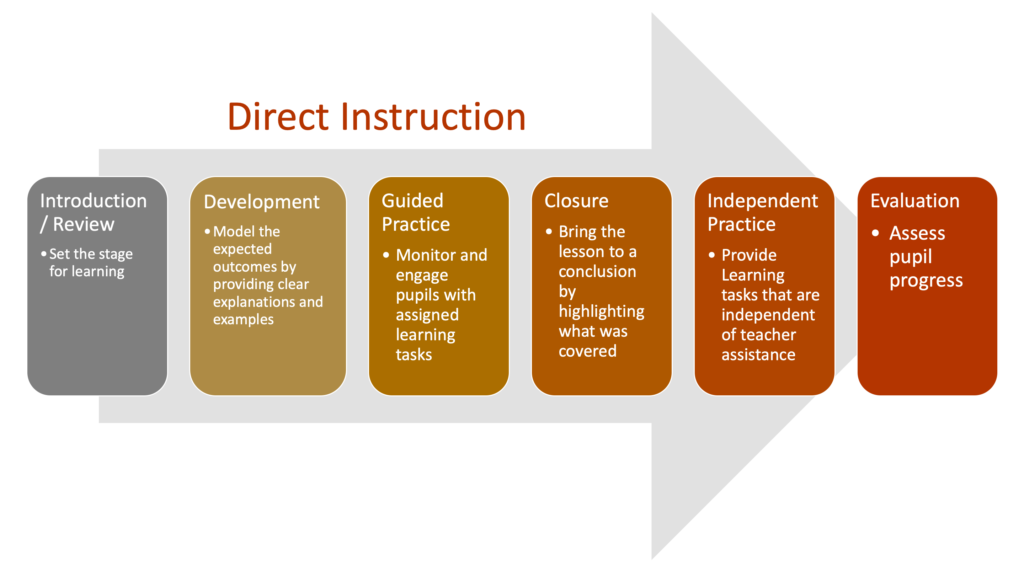This article is about the introduction of direct instruction and discussion related to our course design.

What is direct instruction (DI)?
Direct instruction, also be known as DI, is one of the most familiar teaching approaches. Professor Siegfried Zig Engleman and his colleagues first developed direct instruction at the University of Illinois in 1964 (NIFDIINFO, 2017).
In the classes instructed by teachers who use this technique, students could receive knowledge by attending class, responding to teachers, and completing exercises about the class topics.

Several detailed features about the teaching methodology of direct instruction are listed below (NIFDIINFO, 2017):
- Students are required to respond to teachers immediately in class.
- After getting responses from students, instructors would correct the errors or confirm correct responses.
- Under most circumstances, students respond according to the model which is presented by teachers (in a scaffolded way).
- DI programs are designed based on step-by-step design (with increased complexity).
- Students are grouped according to their skill level rather than grade level. In other words, the time that students spend on finishing the program depends on how fast that they master the skills. Students who have difficulties in mastering skills can keep learning the same unit by repeating studying the materials.
- Several exercises are designed corresponding to different aspects of class materials.
- After class, all students are able to master knowledge in lessons through making responses in class and completing exercises.

Direct instruction and our design
Several features of direct instruction were valued and considered when designing the instruction program about our topic, which aims to introduce Korean popular culture.
Firstly, we found that exercises related to different aspects of materials can help students have an image about what they have not yet understand, and what they have already mastered.
In addition, we thought it is necessary to arrange the materials according to the degrees of difficulty. There should be a step-by-step process for students to accept materials from easy to difficult. In this way, students could gradually get their pace of studying and obtain new knowledge easier if they have already been familiar with the basic information related to new content.
However, it is not easy to get the best expected outcome only through the direct instruction approach.
In our design, the materials would be posted on the websites. Students are expected to master the knowledge by doing readings and watching videos as well as articles. Since the course would be carried out in a digital way, I think the online settings would restrict some advantages of direct instruction.
Though there are some designed exercises for students to check how they learned, it is hard for instructors to get immediate responses from students and interact with them face to face as usually done in direct instruction. Therefore, our pod decided to encourage and guide students to learn through other approaches.
Reference
NIFDIINFO. (2017, May 19) Intro To DI: What is Direct Instruction [Video]. YouTube. https://www.youtube.com/watch?v=TkjxO3PSzwk
Leave a Reply